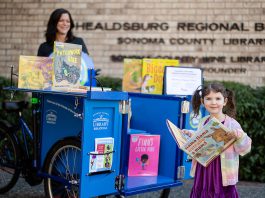Polution Prevention
In celebration of National Pollution Prevention Week, Sept. 16 to 20, the Russian River Watershed Association and the City of Petaluma are once again sponsoring the Safe Medicine Disposal Round-Up Week.
Law: Revealed, natural and positive
Some time ago a column entitled “Religion challenges left and right” by E. J. Dionne, Jr. appeared in the Press Democrat. “Whenever I write sympathetically about religion,” he noted, “I get bombarded with tweets and notes from readers who normally agree with me but cannot abide by the idea that religious belief should be seen as intellectually serious.” Having made that caveat he goes on to treat religion seriously in a summary of a study produced by the Public Religion Research Institute and the Brookings Institution. Dionne himself took part in the research for the study. The study divides citizens into four groups: 28 percent religious conservatives, 38 percent religious moderates, 19 percent religious progressives, and 15 percent nonreligious. These groups are correlated to political attitudes and party affiliations. Not surprisingly, most religious conservatives are politically conservative and gravitate to the Republican Party, and most religious progressives and nonreligious are politically liberal and gravitate to the Democratic party. Also not surprisingly, religious moderates are in between and just as they are religiously moderate they tend to be moderate Republicans or moderate Democrats in fairly equal numbers.
Equal health
Something unusual happened to me recently, and I think it serves a purpose to write about it here. I was attending a Healdsburg Museum opening celebration, and it was lovely. Good wine, good people and a lovely exhibit of local Farm to Table. I was about to leave for another event when someone said “Dr. Anderson, we need you right now!” I ran down the stairs only to find that a woman had passed out, and had briefly, before I got there, become totally unresponsive. You do your training thing, feel for a pulse, check for respirations, etc. She had a very faint and thready, but regular pulse, and was now responding to questions. She was very weak and sweaty. She was perhaps in her fifties, an active and supportive volunteer for the Museum. They were holding her in a sitting position, and I immediately told them to let her lay flat, so that despite her weak pulse, blood would more easily flow to her brain. Sure enough, within a minute or two she became more responsive, less sweaty, and her pulse became stronger. That is when you ask questions about her symptoms prior to this spell. She had no history of heart problems. Earlier she did have some chest pain, maybe some nausea. She had a history of fainting, but not for years. It was a very scary situation for her and for her friends who had seen this happen. So I had to make a decision about what was the next step for her. I will get back to her situation in a moment, but let’s go on to phase two.
Vaccines save lives
Mothers are wise. They offer their families love, support, security and, for no additional charge, they also provide excellent medical advice. When our mothers told us, “A Stitch in time saves nine,” or “An ounce of prevention is worth a pound of cure,” they weren’t just whistling in the dark. They were passing on a time-tested truth. It is always better to prevent a problem in the first place rather than wait for it to happen, then try to deal with the consequences afterwards. This wisdom certainly applies to childhood vaccines.







